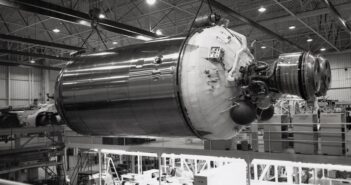
Features
How to Tell Space Rocks from Space Junk
One person’s space junk is another’s research opportunity: scientists study an artificial object mistaken for an asteroid to understand how to identify these objects in future surveys.

Features
Cosmic Rays Near and Far
How do cosmic rays move through the galaxy? Thanks to data collected by the aging Voyager 1 spacecraft, astronomers are closer to finding out.







